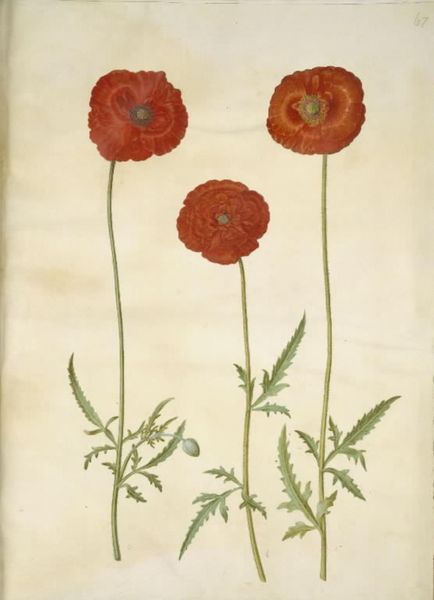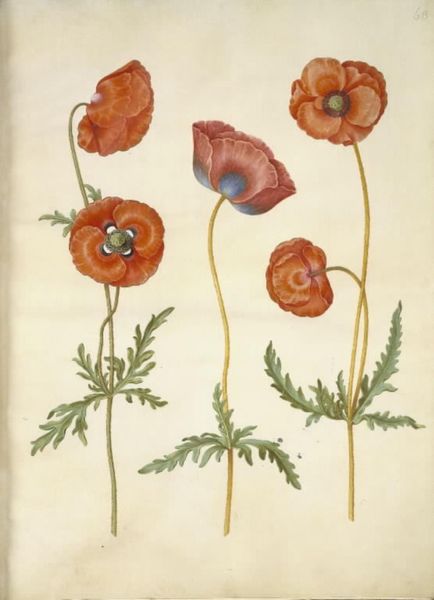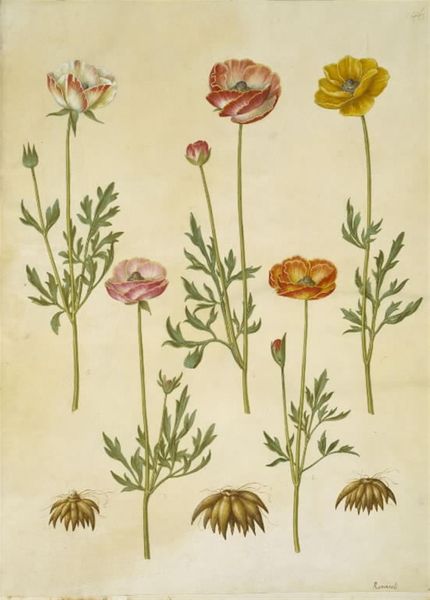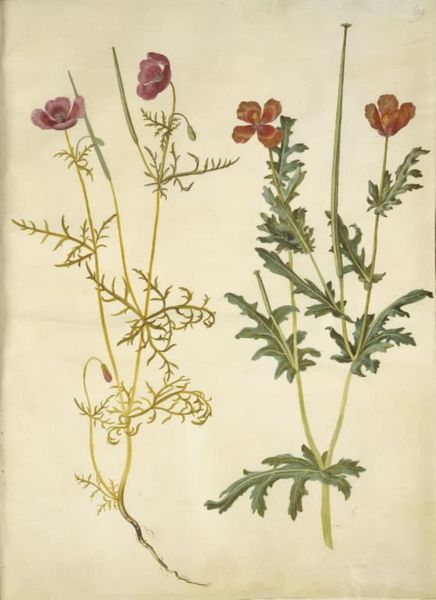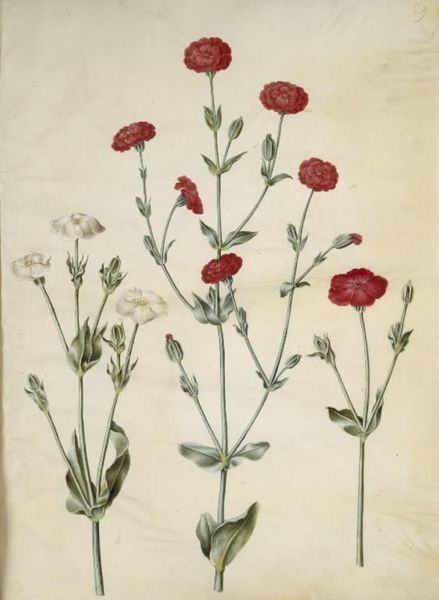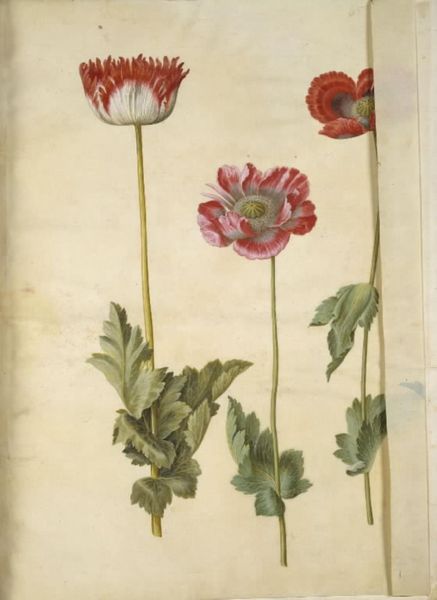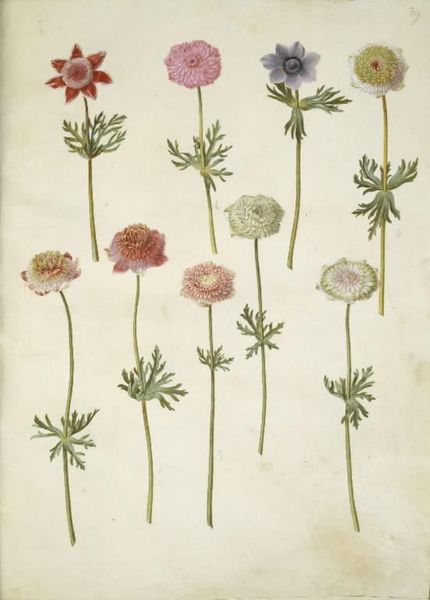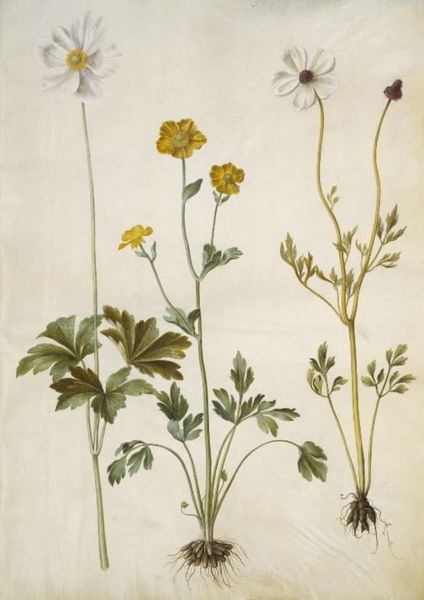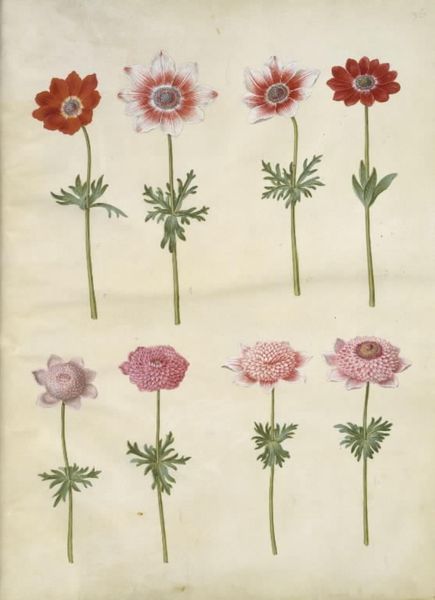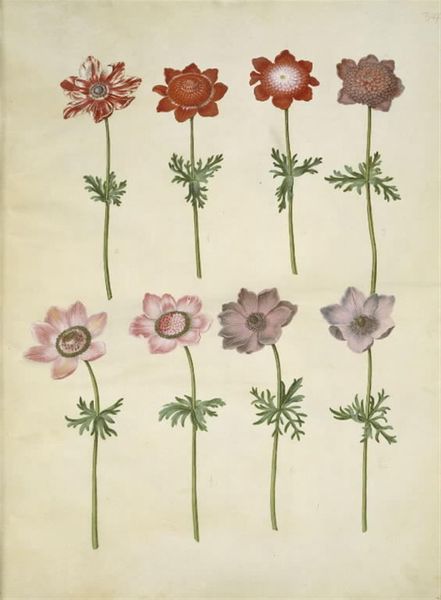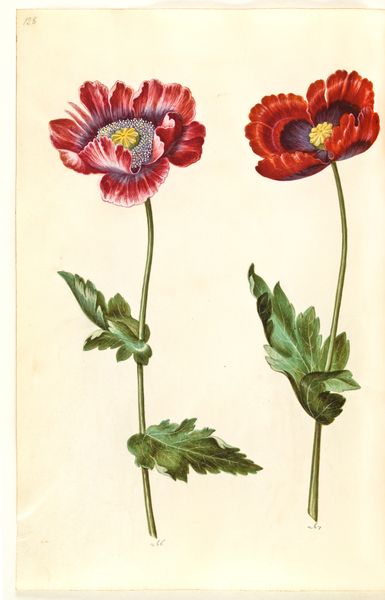
Papaver dubium (gærde-valmue); Papaver rhoeas (korn-valmue) 1649 - 1659
0:00
0:00
drawing, gouache, watercolor
#
drawing
#
water colours
#
gouache
#
watercolor
#
watercolour illustration
#
history-painting
#
botanical art
#
watercolor
Dimensions: 505 mm (height) x 385 mm (width) (bladmaal)
Hans Simon Holtzbecker painted these poppies in watercolor and gouache on parchment sometime in the mid-17th century. Holtzbecker worked in Gottorf, a center of artistic patronage in Northern Europe. Here, Holtzbecker's work is part of a larger tradition, where botanical illustration was closely aligned with scientific and medical knowledge. Visual codes are at play, such as the bright red color and the poppy's association with sleep and oblivion, referencing its medicinal uses. But also its potential dangers. The level of detail suggests that these were made for scientific documentation rather than aesthetic pleasure. To understand the context in which this image was made, we might want to explore the artist's training and the conventions of botanical illustration in the 17th century. What was the social status of artists working for noble patrons? What part did institutions play in shaping the production of botanical images? These are just some of the questions that art historians ask. Art’s meaning is contingent on social and institutional contexts.
Comments
No comments
Be the first to comment and join the conversation on the ultimate creative platform.
